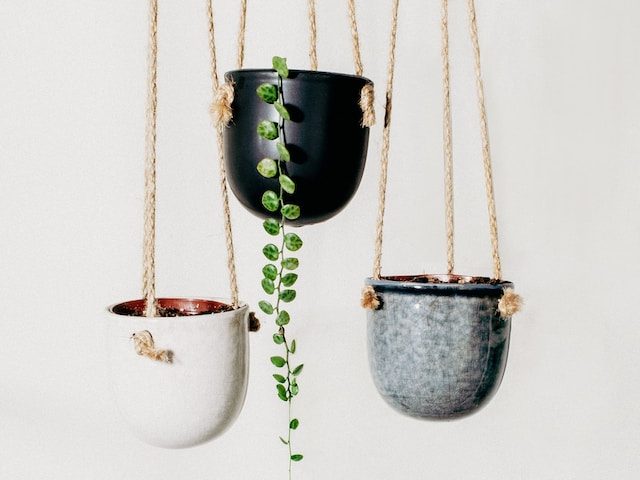
Basic Calathea Musaica Care
Calathea Musaica plants get their ‘Network’ nickname from the intricate detailing on the leaves which makes this plant unique! They are also slightly easier to care for than other Calathea types so a great choice for every plant parent!
| Light |
Bright Indirect LightI love the sunshine but too much direct light will damage my leaves. |
| Water |
Water ModeratelyI don’t like my soil to be too dry or too soggy. Little and often is what I’m after. |
| Humidity |
High HumidityI thrive in humid environments so please mist my leaves every so often. |
| Soil |
Potting SoilI need soil specifically for indoor plants as it retains the right amount of water. |
They can deal with a range of light levels
Whilst bright, indirect light is ideal for your Calathea Musaica, they can tolerate quite a range of light conditions compared to other Calathea types. Just avoid intense direct light during summer as this can damage the leaves.
Keep the potting mix slightly damp
Calathea Musaica plants like to have some consistent moisture in the soil so it’s all about finding the right balance when watering. They are somewhat forgiving if you water too much or too little but over time this can cause real issues for the plant.
Avoid temperature extremes
Calathea Musaica like average room temperature to thrive and can struggle in really cool or warm environments. Keep them well away from heaters, drafts or AC vents.
They will benefit from a humidifier
Calathea Musaica plants love a slightly humid environment as they are native to the tropics. We recommend buying a humidifier to keep a nice stable humidity level around your plant. Other great ways to give it a boost is misting, pebble trays and showering.
Only fertilise during the growth period
It’s important that you hold off fertilising your Calathea Musaica during autumn and winter as your plant will be dormant. During the warmer, sunnier months of spring and summer feed your Calathea Musaica every 1-2 months to support growth.
Propagate a Calathea Musaica Network through division
The most successful way of propagating a Calathea Musaica is through division of the mother plant. Divide up the plant so each section has a good amount of the overall root system. This will increase your chances of a successful propagation.
Repot your new sections into fresh well-draining potting mix and resume normal Calathea Musaica care.
Learn more in our Calathea propagation guide.
Calathea Musaica Network plants are non-toxic
Another thing we love about the Calathea Musaica Network is that it is non-toxic and pet friendly. So you don’t need to worry about having one of these in your home around your beloved furry friends!

Calathea Musaica 'Network' FAQs
Quick and simple answers to the most common questions we see about the Calathea Musaica 'Network'.
Is the Calathea Musaica toxic?
Calathea Musaica plants are non-toxic and completely safe for pets and humans.
How much sunlight does the Calathea Musaica need?
Whilst bright, indirect light is ideal for your Calathea Musaica, they can tolerate quite a range of light conditions compared to other Calathea types. Just avoid intense direct light during summer as this can damage the leaves.
How often should I water my Calathea Musaica?
Calathea Musaica plants like even moisture in their soil so they don’t like extended periods of really dry soil or waterlogged soil. This is why a little but often approach to watering is best for your Calathea Musaica.
Is the Calathea Musaica easy to look after?
Whilst they aren’t the easiest plants to care for, they can adapt well to a range of environments and can be somewhat forgiving for the wrong care. We don’t recommend them to total plant beginners though.
Common Problems with your Calathea Musaica 'Network'
Here are some common issues that you might run into. It's important to diagnose any issues early to give your plant the best chance of bouncing back.
Why does my Calathea Musaica have brown leaf tips?
Brown leaf tips can indicate a lack of humidity or underwatering. Check the water moisture level in the potting mix to see if you need to increase watering.
If dry air is the issue, then start by regularly misting your Calathea Musaica’s leaves and buy a humidifier to keep a nice stable level.
Why are the leaves on my Calathea Musaica curling?
Curling leaves on a Calathea Musaica can indicate two things; low temperatures or a lack of humidity. Check the spot your plant is in to see if it is near a drafty window or AC vent. Otherwise assume that dry air is the issue and start to regularly mist and shower your plant.
Why does my Calathea Musaica have brown leaves?
Brown leaves can be quite a difficult problem to diagnose on a Calathea Musaica so we recommend going through the following and eliminating one by one: over or underwatering, dry air, over-fertilisation, natural ageing.














